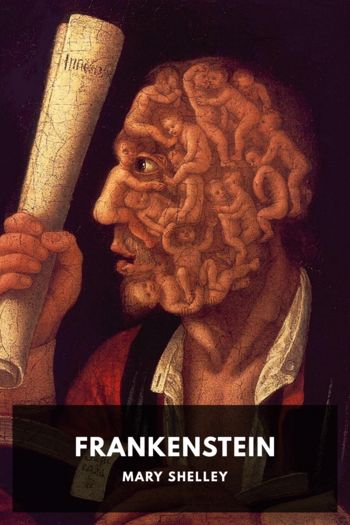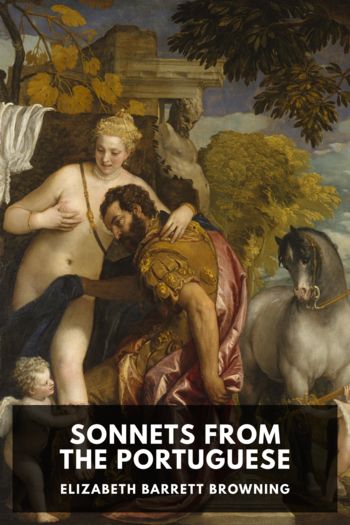Two-Way Mirror Fiona Sampson (best romance ebooks .txt) 📖

- Author: Fiona Sampson
Book online «Two-Way Mirror Fiona Sampson (best romance ebooks .txt) 📖». Author Fiona Sampson
The publication of An Essay on Mind helps resolve all this. It’s a palpable achievement, and in just a few months it sets off three correspondences that lift Elizabeth out of intellectual loneliness, transform her daily reality, and have a lasting effect on her life. The most affectionate, and ultimately longest lasting, of these exchanges is with a distant cousin. John Kenyon shares a great-grandfather with Papa, with whom he was at Cambridge, having followed the same route from Jamaica to England for his education. When his interest in Elizabeth begins, Kenyon is a hugely sociable forty-two-year-old of independent means. The best-known portrait, a lithograph after John Collingham Moore, shows him at seventy with quizzical, warm eyes, the high-coloured cheeks that suggest a life dedicated to sociability, and the girth of an epicure.
A sometime poet and a generous patron of writers, it’s only natural that when he visits Hope End in July 1826, he scrounges a copy of Elizabeth’s newly published Essay. We can guess the light-heartedness with which he does so from the apology he writes after reading the book, when he suddenly realises that this is serious work:
Fame, I hope if you should persevere seeking her, will not turn out to you what you have so poetically described her, and what in truth she has turned out to so many—
—But you have plenty of time before you.
It’s the start of a lifelong, and life-changing, relationship. Over decades, Kenyon will introduce Elizabeth to the key confidant of her thirties, Mary Russell Mitford, who in turn gives her the adored spaniel Flush. He will encourage his mentee and Robert Browning to meet. Eventually, he will even give the Browning couple and their son financial support.
But for all its future importance, this isn’t the first friendship that Elizabeth’s Essay produces. Since June she’s been corresponding with another family friend, Sir Uvedale Price, who also lives in Herefordshire. His home at Foxley near Yazor is close to the craggy Welsh hills and less than three miles from the meandering River Wye. This is a terrain far removed from the smooth valleys of southern England, so amenable to neoclassical order and elegant, ‘Capability’ Brown landscapes; and Sir Uvedale has helped develop the strikingly anticlassical aesthetic of the Picturesque, which is now shaping national and international fashion. He published the work for which he’s best known, An Essay on the Picturesque, As Compared With The Sublime And The Beautiful; And, On The Use Of Studying Pictures, For The Purpose Of Improving Real Landscape, in 1794.
The lengthy subtitle says it all. Price argued that the Romantic categories of the Sublime and the Beautiful, until then fashionable ways to think about both natural and man-made landscapes, should be supplemented by a third: the Picturesque, or in other words what works well in a picture. In eighteenth-century France, the principle had developed that gardening was a painterly creation ‘designed by the man of genius, and adored by the man of feeling’. This idea was borrowed for British audiences by artist, travel writer and Anglican clergyman William Gilpin, an associate of Price’s, who first cited it in 1782 in his Observations on the River Wye and Several Parts of South Wales, etc. Relative Chiefly to Picturesque Beauty; Made in the Summer of the Year 1770. Hugely successful, and followed by further volumes, this illustrated tourist guide created the Wye Tour, that first model of mass tourism, quickly popular even among the wealthy as the Napoleonic Wars made traditional Grand Tours problematic.
Sir Uvedale lives upriver from all the excitement, yet by the time his relationship with Elizabeth springs to life, those thirty-odd miles of river trip between Ross on Wye and Chepstow, featuring gorges, overhanging woods, old towns, ruined castles and the ruins of Tintern Abbey, are the epitome of Picturesque fashion. More exciting for Elizabeth, though, is that Sir Uvedale is friends with William Wordsworth, whose own Wye Tour resulted in his famous ‘Lines Written a Few Miles above Tintern Abbey, on Revisiting the Banks of the Wye during a Tour, July 13, 1798’. Elizabeth will admire and advocate Wordsworth throughout her life, and this poem, with its mixture of applied philosophy and picturesque description, seems clearly to have influenced her. Wordsworth writes:
Once again I see
These hedge-rows, hardly hedge-rows, little lines
Of sportive wood run wild: these pastoral farms,
Green to the very door; and wreaths of smoke
Sent up, in silence, from among the trees!
Half a century later Aurora Leigh echoes:
Behind the elms
And through their tops, you saw the folded hills
Striped up and down with hedges, (burly oaks
Projecting from the line to show themselves)
Through which my cousin Romney’s chimneys smoked
As





Comments (0)